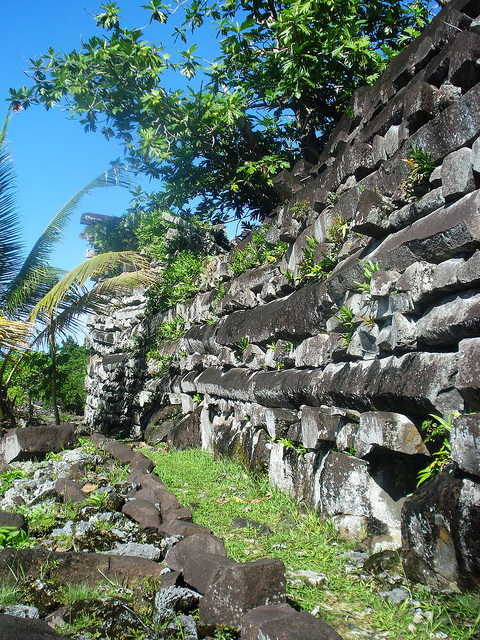|
Nan Madol | Federated States Of Micronesia |
CONTACT |
|
|
||
No one in Pohnpei knows exactly how Nan Madol was built or why the early inhabitants undertook such a mammoth task, but islanders swear ancient kings known as Nahnmwarkis used magic. Scientists say the basalt boulders, some as heavy as 50 tons, were transported by rafts to Nan Madol from the other side of the island and levered into place with palm tree trunks. The boulders were dragged inch by inch up log ramps before being piled one atop the other, they said. No mortar was used to hold them together. The rock structures reach as high as 16 meters on Pohnwi islet.
Scientists estimate the ruins are about 900 years old and believe they are the only such structure in the dozens of islands scattered across the Pacific basin. The main structures have been compared with the ceremonial squares built by the Mayans and Aztecs of Central America. The city's grandeur must have awed visitors arriving to trade or bring tribute. Nan Madol was a religious center and was inhabited by the kings of Pohnpei until it was abandoned in the middle of the 19th century. The rites performed within the towering walls remain a mystery. There is some evidence the temples produced the ceremonial drink sakau, still used by the people of Pohnpei to sanctify their rites.
| ||
Photos by Tara Sturm | Photo Gallery by ajdemma |
|
Pohnpei Visitors Bureau Address: Phone: Email:
|
| © Nan-Madol.com - All Rights Reserved! - Privacy Policy |
 It comprised temples, burial vaults, meeting houses, public baths and pools for turtles, fish
and eels.
It comprised temples, burial vaults, meeting houses, public baths and pools for turtles, fish
and eels. Construction by thousands of workers probably took hundreds of years.
Construction by thousands of workers probably took hundreds of years.